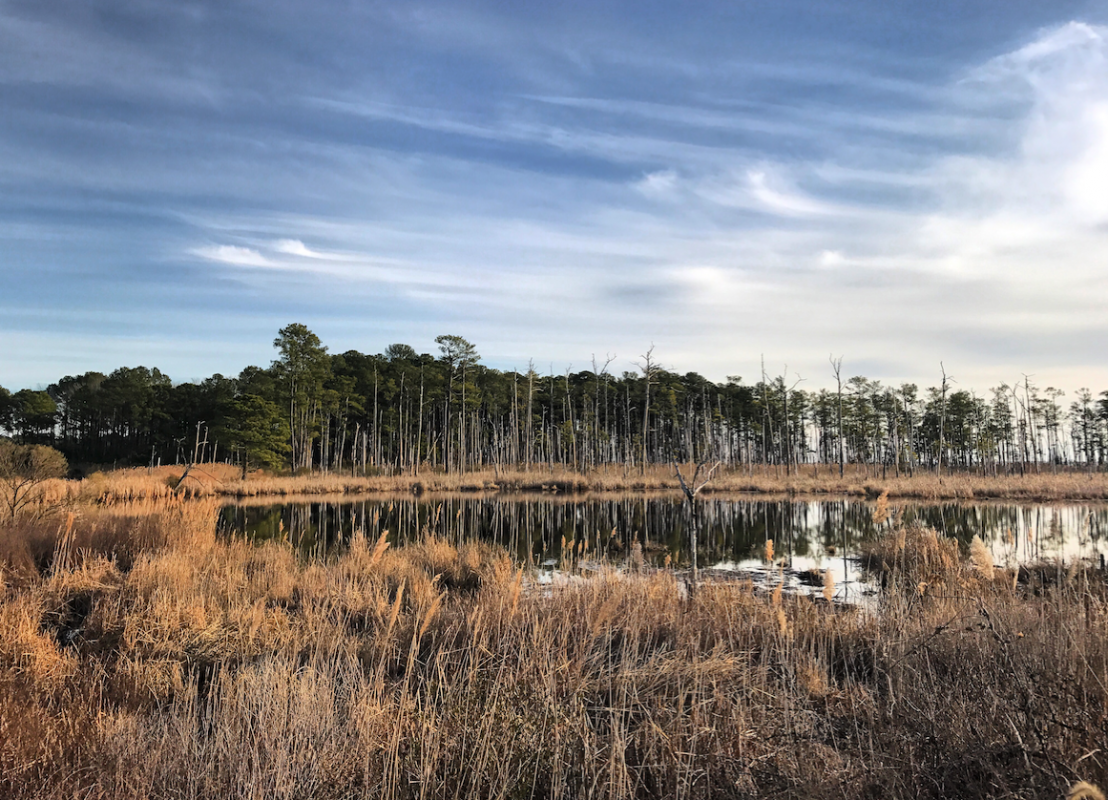
CLIMATE CONCLUSIONS
On the heels of a landmark report from the United Nation’s Intergovernmental Panel on Climate Change in October, the federal government released its own study late last month, with implications for Maryland. The National Climate Assessment, which is conducted every four years, found that the state is already experiencing some of the adverse effects of rising global temperatures, such as increased coastal flooding, precipitation, and frequency of waterborne illnesses, as well as reduced air quality. Future predictions include more of the same, as well as rising waters, the continued loss of already vulnerable marshlands, and shorter winters, the latter of which admittedly sounds nice. However, “the Northeast region is characterized by four distinct seasons and a diverse landscape that is central to the region’s cultural identity, quality of life, and economic success,” the study writes. “The seasonal climate, natural systems, and accessibility of certain types of recreation are threatened by declining snow and ice, rising sea levels, and rising temperatures.”
RECORD RAINS
It’s official: 2018 is Baltimore’s wettest year on record. As of early December, the total precipitation recorded at the Baltimore-Washington International Thurgood Marshall Airport totaled 65.67 inches, surpassing 62.66 inches in 2003, the previous wettest year on record. With more than 20 inches of rain from September through November, including the effects of Hurricanes Florence and Michael, this was also Baltimore’s wettest fall on record, while the summer—with more than 25 inches from June to August—was the city’s second wettest. “Congratulations, Baltimore,” tweeted the Washington Post’s Capital Weather Gang in mid-November. “Wettest year on record—with still six weeks to go!”
OPEN WATERS
After a year of headlines surrounding the flood of debris flowing through the Conowingo Dam following months of historic rainfall, the gates are once again open in Darlington, and this time, until further notice. Earlier this year after heavy spring rains, the dam created controversy as the opening of its gates carried trees, car tires, and other miscellaneous litter freely from the Susquehanna River into the Chesapeake Bay, even inundating the Annapolis Harbor. “The water right now really looks like chocolate milk,” University of Maryland Center for Environmental Science professor Cindy Palinkas told The Sun in August, as satellite images also showed a plume of sediment in the Upper Bay. Now, after a historically wet November, up to 12 of the dam’s flood gates are open under “spill conditions,” and boaters are advised to once again use extreme caution due to potential detritus afloat in local waters.
DRILL DISPUTE
In late November, the Trump administration approved the use of seismic surveillance to find oil and gas formations under the Atlantic Ocean, including locations off the Maryland coast. The move comes after the announcement of a five-year offshore drilling plan, which would open as much as 90 percent of U.S. waters to energy exploration. At the time, Governor Larry Hogan joined other states to request that Maryland waters be excluded from potential drilling sites, while the General Assembly in Annapolis voted to impose strict liability standards for companies regarding any future spills. Critics claim the seismic practice can disturb, injure, and kill marine wildlife, including whales, sea turtles, and dolphins who frequent nearby waters on their migratory paths. According to National Geographic, “large marine mammals like whales and dolphin use sound for communicating, feeding, and mating, meaning the blasts could impact all three of those essential activities,” while studies have also shown that the blasts impact creatures as small as zooplankton, a critical part of the aquatic food chain, at upwards of 4,000 feet away. Meanwhile, officials have stated that survey vessels will be required to abide by certain precautions, such as including onboard lookouts and acoustic monitoring to detect marine life, and that operations will be shut down when a protected species have been sighted. Permits have been authorized for five companies from Delaware to Florida.
OVERHARVESTED OYSTERS
Last winter, Maryland oysters were overharvested in more than half of the state’s public fishery, according to the first-ever stock assessment by the Department of Natural Resources and University of Maryland Center for Environmental Science. Released in late November, the report warns that such harvests, if continued, could eventually eliminate the bivalve populations in those regions. It also estimates that the state’s total oyster population has declined by about half since 1999, down to about 300 million from 600 million over the last 18 years. Experts expect these findings to stir debate over the management plan of the fishery.
PARK REPAIRS
In the coming months, a public city park will get new life as the National Recreation and Park Association announced the revitalization of ABC Park, formerly known as Catherine Street Park, located just northeast of the sprawling Carroll Park in Carrollton Ridge. Slated for completion in summer 2019, the renovations to this volunteer-run greenspace will include an upgraded and expanded playground, as well as the addition of new amenities such as an outdoor basketball court, an interactive splash pad, and an 800-square-foot indoor-outdoor field house. The park is frequented by local youth and used for community sports games and neighborhood festivals.
